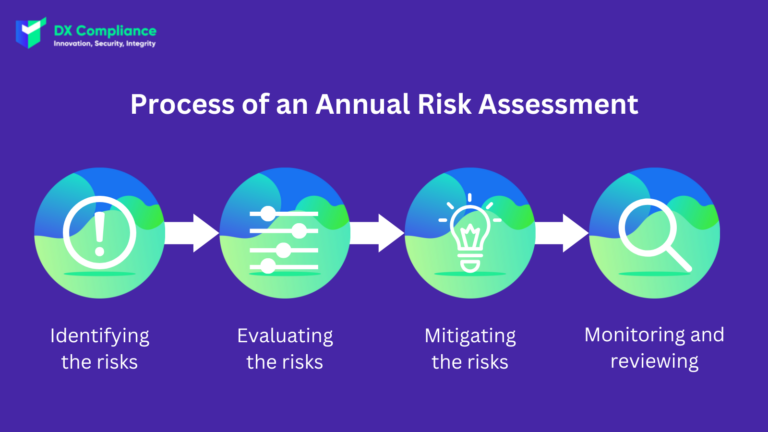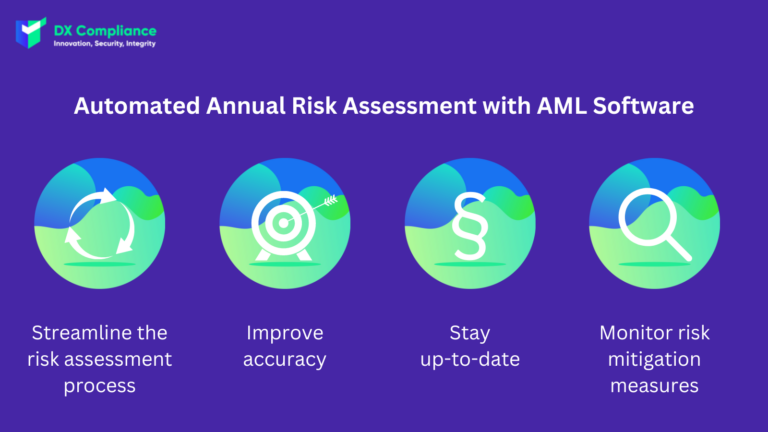13 January 2023, 9:19
Tagline
13 January 2023, 9:19
Tagline
Annual risk assessment is an important component of an effective anti-money laundering (AML) compliance program. It involves evaluating the risks of money laundering and terrorist financing that a financial institution or other regulated entity may face, and implementing measures to mitigate those risks – according to the risk based approach.
Conducting an annual risk assessment allows a company to identify and prioritize its AML risks, as well as to update its risk profile in light of any changes in its business or the external environment. It is also a requirement of many AML regulations, including those issued by the Financial Action Task Force (FATF) and other international organizations.

The process of conducting an annual risk assessment typically involves several steps:
This involves identifying the specific risks of money laundering and terrorist financing that a company may face, based on its business activities, customers, and geographic locations. These risks may be internal, such as inadequate internal controls or a lack of employee training, or external, such as high levels of corruption in a country where the company operates.
Once the risks have been identified, the next step is to assess their likelihood and potential impact. This may involve using risk rating systems or other tools to assign a level of risk to each identified risk.
After the risks have been identified and evaluated, the company should implement measures to mitigate or eliminate them. This may involve updating policies and procedures, increasing employee training, or implementing new technology or systems to better detect and prevent money laundering and terrorist financing.
The final step in the risk assessment process is to monitor and review the effectiveness of the risk mitigation measures in place. This may involve conducting ongoing assessments and audits, as well as making any necessary adjustments to the risk mitigation measures.
Annual risk assessments are typically required to be carried out by financial institutions, money service businesses, and other entities that are subject to AML regulations. The requirement for conducting an annual risk assessment is typically specified by the relevant government agency or regulatory body responsible for enforcing AML laws and regulations.

Compliance software with AI and automation can be a useful tool in conducting an annual risk assessment as part of an AML compliance program. Here are a few ways in which such software can help:
Overall, compliance software with AI and automation can be a valuable tool in conducting an annual risk assessment as part of an AML compliance program. It can help a company streamline the process, improve accuracy, stay up-to-date on changes in regulations, and monitor the effectiveness of its risk mitigation measures.
DX Compliance is an AML Compliance firm helping our clients identify, prevent and report financial crime. DX Compliance help Banks, FinTech’s and Payments Providers to continually monitor their risk and detect the threat of money laundering to ensure compliance and reduce fines.
With the products of DX Compliance, an automated annual risk assessment can be conducted. The Transaction Monitoring System is an efficient and powerful AML system that identifies the information by using AI and other technologies which are the input for a full risk review.
Furthermore, CheckAML is an ad-hoc PEP and Sanctions & Risk Analysis check tool which can be used for doing Ad-hoc checks on potential clients. That means that it only takes a few seconds to get a whole risk report.
Curious? Please contact our experts!

08.08.2022
An overview of recent AML developments in the UAE.
Get access
15.10.2021
The introduction of 6AMLD regulations aims to reduce financial crimes.
Get access
27.07.2021 AML Compliance
Uncovering the PEP and Sanctions Lists and Global Regulation
Get access